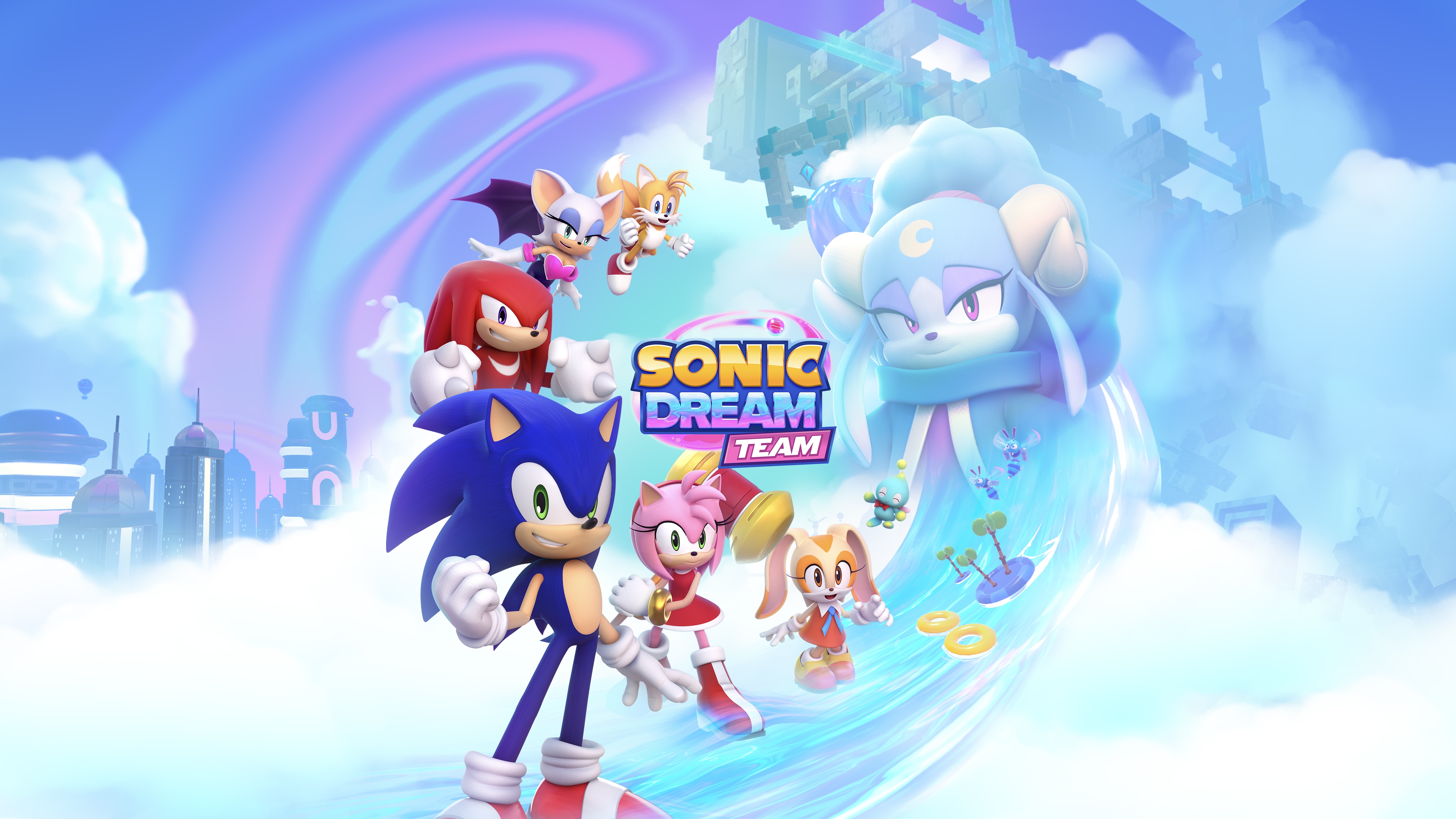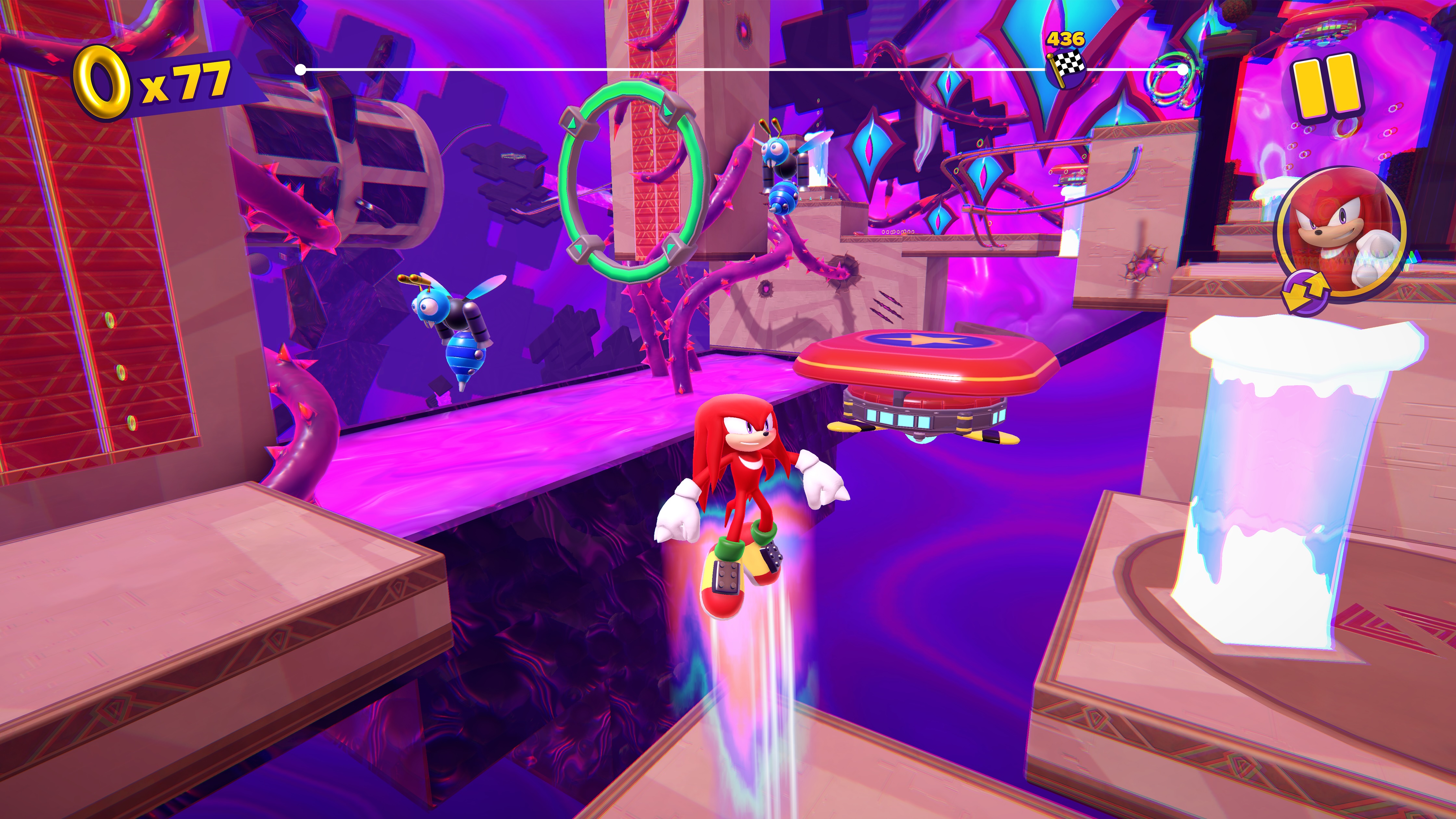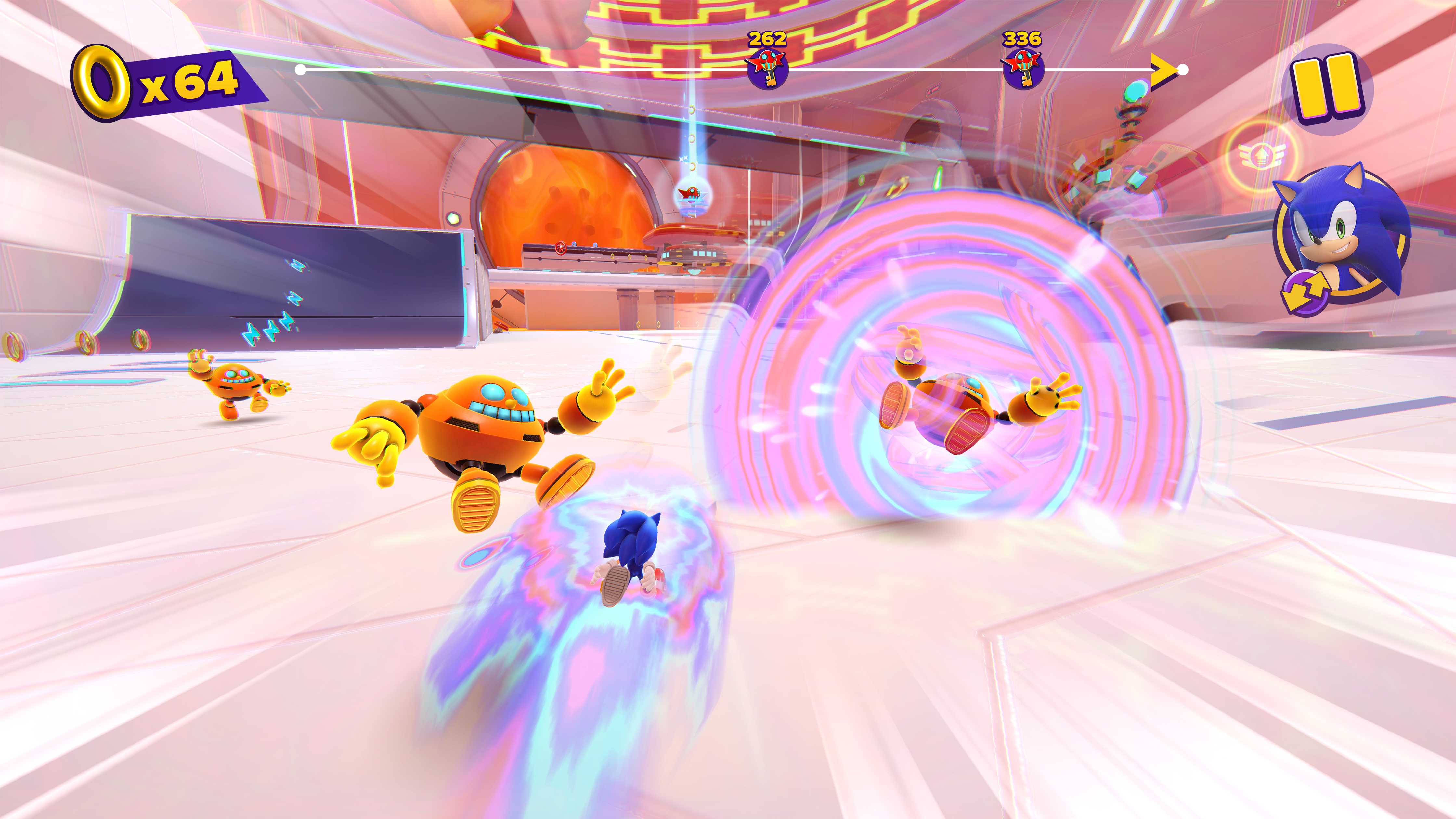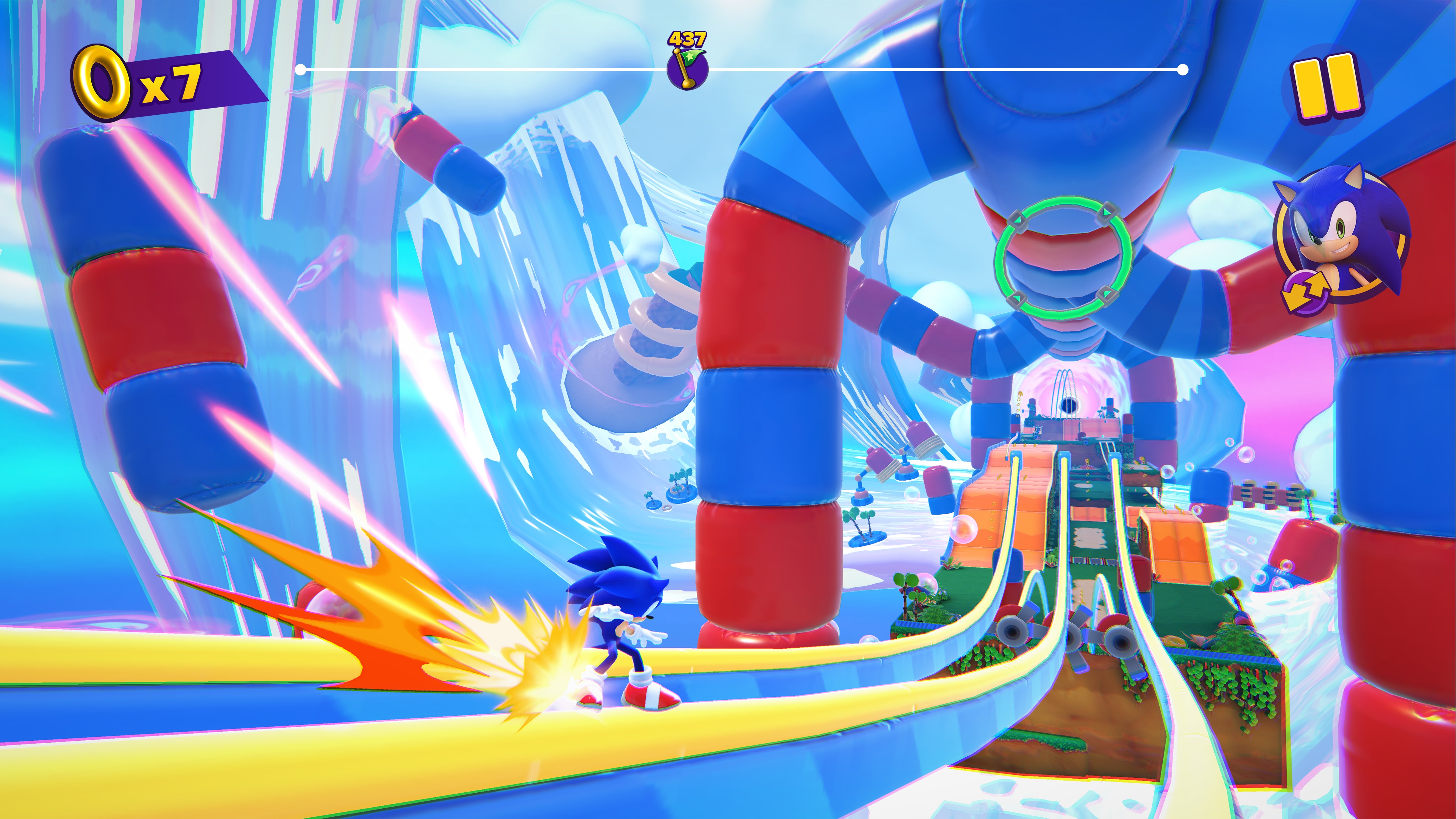
The Sonic Dream Team Apple Arcade announcement was very exciting for a few reasons. I’m always excited to play a new Sonic game, but I was curious about this new 3D entry because I loved Sonic Frontiers and have played that on every platform now. Sonic Dream Team has been developed by SEGA HARDLight who have done some amazing PC and console ports over the years, and I figured now was a great time to chat with the team about Sonic Dream Team, playable characters, platform choices, and the game’s vision. I had a chance to talk to Dan Rossati (Studio Creative Director) at SEGA HARDLight about those topics and more.

TouchArcade (TA): Tell us a little bit about yourself and SEGA HARDlight.
Dan Rossati (DR): I feel it’s best to start with the studio – HARDlight has been working with the Sonic IP for well over a decade, and in that time, we’ve gained a lot of experience with the brand. For instance, Sonic Dash is ten years old and still going strong today, and along with its sister game, Sonic Forces: Speed Battle, we’ve had over a billion downloads of our games. In general, HARDlight is home to many classic SEGA fans, many of whom are long-time Sonic fans, including myself.
In 1991, I was six years old when Sonic first launched and already completely obsessed with physics and the beauty of motion. Seeing the speed, momentum, attitude, and pinball-inspired physics struck a chord that made me love the franchise ever since. Now, I find myself in the driver’s seat, crafting a Sonic game that fits pretty closely with the Sonic games I’d dreamt about as a kid. It’s not lost on me how lucky that makes me and how lucky I am to have found a home in a team that shares my vision and passion for Sonic.
TA: We’ve had quite a few Sonic releases in the last few months with Sonic Origins Plus in June, Sonic Frontiers’ updates, and Sonic Superstars. How long was the development time for Sonic Dream Team?
DR: It’s been a packed year for the franchise. On top of everything you listed, we had LEGO release their awesome Sonic kits, the brilliant April Fools’ surprise of The Murder of Sonic the Hedgehog, Season 2 of Sonic Prime, and the outstanding Sonic Symphony World Tour.
As a Sonic fan, I feel like there’s a lot of choice for everyone to enjoy Sonic in multiple formats; it’s genuinely a cross-media brand, with something new happening all the time, which I love.
As for our development time, we made Sonic Dream Team in just under two years. The team worked exceptionally hard and put their all into it. It’s incredible what they were able to pull off in that time.
TA: When discussing Sonic Dream Team, a friend of mine brought up something interesting about the playable characters. I was wondering what led to Rouge and Cream being playable in the game, and whether the team also considered others like Shadow or Blaze at some point?
DR: All of us have been inspired by the positive reaction to the addition of Cream and Rouge; it’s exhilarating. A few narrative reasons for their inclusion will become clear once you play the game. They pair up nicely with the male counterparts of their skill set. Rouge climbs and glides the same as Knuckles, and Cream can fly just like Tails.
HARDlight is also home to a lot of Cream fans, so much so that in Dash and Forces, we did our version of Cream called Unicorn Cream, which turned out to be immensely popular with the fans. We’re all particularly proud of it, so we felt that everyone would appreciate her inclusion in a proper narrative adventure. For Dream Team, I was able to shape the story around Cream because I wanted it to feel natural to have such a young character in harm’s way, with the reason being circumstantial rather than due to poor or out-of-character choices. Similarly, Shadow and Blaze require more existential-level threats to turn up than the starting point for Dream Team allowed. Blaze must be pulled in from the Sol dimension, so the threat must be felt at that scale. My director brain likes things to make sense and stay in line with how you’d expect the characters to act. That said, Cream and Cheese’s involvement may have been overthought as we all joke in the fandom about how they’re the most powerful force in Sonic’s Universe. I say joke, but if you know, you know.
TA: I’ve seen people say Sonic Dream Team looks like a successor to Sonic Adventure. What are your thoughts on that and what Sonic games did the team treat as inspirations for Sonic Dream Team?
DR: I can understand the comparisons based on what little information is out there, but that is not our intention with Sonic Dream Team. The vision was to make a game that allowed players to get into an exhilarating flow state. Early on, I was waving my hands around, emulating rollercoasters and halfpipes, while enthusiastically trying to communicate what I meant by flow. On top of that, we knew that we’d be catering to both touchscreen and controller, so the controls had to be as accessible as possible while allowing the player maximum control at high speeds.
We did reference many of the past games, Adventure 1 and 2 included, but didn’t copy any of them directly, as we wanted Dream Team to become its own thing. We were also lucky to be able to work alongside Takashi Iizuka. He’s dedicated three decades of his life to Sonic, and there isn’t much he can’t answer regarding the franchise. He was an excellent guide for the entirety of the project.
From the outset, the goal was to allow players to get to grips with the controls and, with a little bit of practice, be able to do speed runs, expressing themselves through free-flowing movement without too many snagging points.
To achieve this, we considered skate parks and bobsled runs with rounded corners so you can easily transition from floor to wall, keeping your flow. We also added in the boost, which, if you find a good line through the levels, you should be able to chain them to get some amazingly fast run-throughs.
We’re looking forward to seeing what the speed run community can do with the gameplay on offer this time.

TA: Will there be any iPhone 15 Pro and iPad Pro 120hz support in Sonic Dream Team?
DR: Not in the initial launch, but it runs very smoothly at 60hz on the higher end devices. We do have an experimental branch with runs at 120hz but there’s still some bugs to work out to make sure the physics plays nicely at that speed. It does look amazing though, so if we get to it, we’ll try and add it in future. The team definitely wants it for sure.
TA: How was it working with Apple Arcade once again with Sonic Dream Team?
DR: Amazing. We’ve worked on Apple Arcade since the beginning of the service, and our team has loved it each time. The folks at Apple Arcade are great to work with and Arcade as a platform is set up to focus on quality, which is music to our ears for developers. In the studio, we felt trusted and respected, and the Arcade staff encouraged our ambition for the game.
TA: What led to Sonic Dream Team being an Apple Arcade exclusive rather than on all consoles PC?
DR: When Apple Arcade launched, we were delighted it brought about the conversation of getting a true 3D Sonic platformer into the lineup. Having worked with Apple and the Apple Arcade platform previously for Sonic Dash+ and Sonic Racing, we knew that Sonic Dream Team would be a great fit for our next game on iOS. We can’t wait to see fans, both new and old, hop into Dream Team and the franchise as a whole.
TA: Are there plans for post launch content updates like other Apple Arcade games?
DR: Yes definitely, we’re shaping said plans right now.

TA: What should players expect in terms of replay value or the post game in Sonic Dream Team?
DR: Packed around the main story and beyond, there are a lot of missions and some very cool collectibles to unlock via challenges. The levels were made for exploration, so players will only find some things in the first few passes. As you unlock the characters in the flow of the story, you’ll be able to get to new areas and find different routes, too. The game’s structure is designed with replay value in mind, so it should feel organic. We also plan to add and update the game as we go, keeping the game fresh.
If you happen to be a bit more hardcore in how you play, the game does have a pretty high skill ceiling in terms of fast-speed runs, so trying to find the most optimal routes through levels is where I think the most replay comes from for advanced players.
TA: I know Tee Lopes composed the theme for the trailer with Jonny Atma. What should we expect from the game’s soundtrack? Will it be by them as well?
DR: We were so lucky to have both Tee and Jonny alongside the legends of Tyson Hesse and Powerhouse Animation in one project. I think when fans get to experience everything in full, they’ll go wild. In my whole career, this project is something I’m most proud to be a part of. Everyone was effortless to work with, especially thanks to Yukio Kusumoto, the Senior Animation Director, and his team here at SEGA. All of the production was taken care of seamlessly, as I could write, say, or doodle what was in my head, and this group of insanely talented people made it a reality.
For the in-game music, we got to work with long-time HARDlight collaborator and incredible composer Michiel van den Bos, known for his groundbreaking work on Deus Ex and Unreal Tournament. Michiel understands what we’re trying to do, and I think players will appreciate how he crafted the music to fit each of the different mission types. I really feel he outdid himself for the final Boss music though, I think fans are going to love it!

TA: SEGA Hardlight has done many amazing projects for SEGA over the years. What are your favorites?
DR: I’ve only been at the studio for three and a half years, but before that, I was a studio fan for a while. In fact, outside of Sonic Dash, I was drawn to them for Crazy Taxi: City Rush, which I enjoyed, so that one is up there for me. I also love the version of ChuChu Rocket! HARDlight did; I played that a lot, so that’s up there, too. Honestly, I think Sonic Dream Team is a good contender for the best game from HARDlight, and most importantly, from a dev perspective, it’s given us an incredible leap forward in the complexity of games we can create due to our substantial code base. So, as cool as it is to look at our back catalog, I’ve got to say I’m incredibly excited for HARDlight’s future.
TA: Unrelated to Sonic Dream Team, I wanted to thank you for the superb Valkyria Chronicles 4 PC port. Are you interested in revisiting that franchise?
DR: That was a little before my time here, but the team that did work on it will be thrilled that you liked it. Generally speaking, I think most of SEGA’s IPs are exciting to us; a lot of the time, it comes down to opportunity cost as to what we go with next.
TA: Is there anything you’d like to say to the TouchArcade readers who know your work through mobile games?
DR: We appreciate everyone who takes the time to check out our games. There’s a lot of choice out there for what to play, so it’s heartwarming to see how large the audience is for our work. I hope everyone who plays Sonic Dream Team when it goes live on December 5th enjoys it. It was made with love, by fans, for fans.

We’d like to thank Dan Rossati, SEGA HARDLight, SEGA, and Jennifer Tam from Apple for their help and time here.
If you’d like to play Sonic Dream Team at launch, you can sign up here to be notified when it launches next week on Apple Arcade.